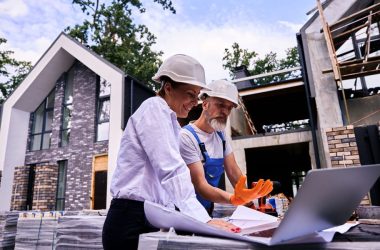Because of their strength-to-weight ratio, heritage aluminium windows may be used to restore listed structures. This allows for narrow sightlines and slim frames that mimic those of old steel windows. Complex fenestration patterns may be replicated because to sophisticated fabrication processes like CNC milling and precision casting. A historically suitable look may be achieved with finishing choices including textured finishes that resemble timber grain or powder coating in RAL colours that have been certified for heritage use. Proposing aluminium windows as an element of an established heritage statement can assist gain approval, and working with conservation authorities is essential for successful restoration projects.
Aluminium and wood are used in hybrid window systems to preserve visual coherence and provide a cosier, more classic look. This method works well in cosy, ambiance-rich domestic spaces. Aluminium windows are easier to maintain than wood windows, especially when it comes to the long-term care of listed structures. They are appropriate for big estates, government structures, or cultural sites with tight budgets since they are corrosion-resistant and require little maintenance. This is in line with the built environment sector’s increasing emphasis on the environment. National sustainability goals and climate resilience objectives can be met by restoring cultural assets using low-impact, sustainable materials. It is feasible to modernise legacy houses without sacrificing their character, as evidenced by instances in the UK and Europe that successfully include heritage aluminium windows into listed building restorations.
Choosing the correct installation crew and supplier is essential to the success of historic projects. In addition to offering advice services for application preparation and compliance, they must be sensitive to the language of architecture and historical context. Installers need to know how to work with old fabric and make sure that new elements don’t throw off the building’s equilibrium. When choosing vintage aluminium windows, user experience is very important since aluminium provides better security, easier operation, and better thermal efficiency. In urban or rural areas, acoustic insulation, condensation management, and draft-proofing are especially advantageous.
As legislative frameworks change and conservation authorities become more cognisant of their potential, heritage aluminium windows should become more and more popular. Aluminium is set to be a key component in improving thermal envelopes as buildings inventory ages and energy efficiency requirements rise. In heritage architecture, aluminium is emerging as a potent ally that helps preserve the past while planning for the future, despite obstacles including aesthetic concerns and legal barriers. Heritage aluminium windows, when installed correctly, respect old structures while enabling the advantages of contemporary technology and sustainability.







